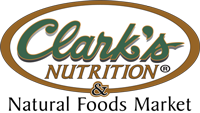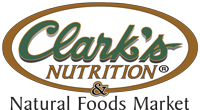Gluten Free
What does following a gluten-free diet mean? That you're embarking on an easy diet with a wide range of health-promoting effects. Instead of dwelling on what you’re giving up, consider that you’re going to enjoy a whole new world of delicious food options to meet your special dietary needs. You’ll be eating seasonally, choosing more fresh fruits and vegetables, focusing on meats, seafood, poultry, legumes, lentils, corn, and rice, and discovering fascinating ancient grains such as quinoa, amaranth, and millet. You’ll be able to eat potatoes, eggs, most cheeses, even chocolate (!)—and enjoy them without guilt because you’ll be taking good care of your body. In fact, you’ll probably end up eating—and feeling—better than ever!
Visit this page for more information about living Gluten Free
---
We carry a large variety of gluten free items, the brands listed below represent just some of the offerings we carry

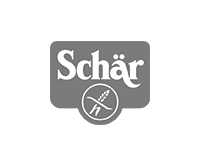
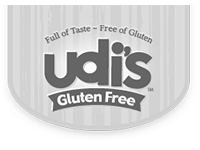



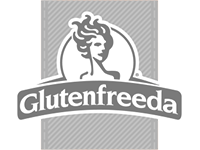
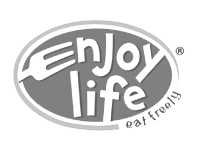





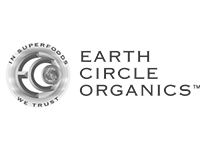

More Diets
Related Topics
Functional Foods and Nutraceuticals
What are functional foods:
A functional food is any food that exerts health properties beyond the traditional nutrients it contains. There are two categories of functional foods.
1. Foods that naturally contain biologically active, non-nutrient compounds that provide health benefits. These compounds are phytochemicals, which are also sometimes called nutraceuticals. Based on this definition, all plant foods could be considered functional foods since they are all rich in phytochemicals or nutraceuticals
2. Food products specifically formulated to have higher amounts of nutrients or phytochemicals than would naturally occur in that food. These are also called “designer foods.”
Defining Nutraceuticals or Phytochemicals:
Phytochemicals are plant chemicals that differ from nutrients in some important ways. Essential nutrients—which include protein, fats, minerals, and vitamins—are essential for life. Without them, people develop acute deficiency disease symptoms that can eventually cause death. Nutrients are found in all of the food groups.
Phytochemicals are not necessary for life but they help to promote optimal health by lowering risk for chronic diseases, such as cancer and heart disease. They are found only in plant foods. Fruits and vegetables are among the best sources of these compounds. Phytochemicals are believed to have many health benefits.
Some groups of phytochemicals that have been linked to decreased cancer risk include:
- Allyl sulfides, which may stimulate activity of enzymes that help to eliminate toxic compounds and are found in onions, scallions, and leeks.
- Dithiolthiones and isothiocyanates, which may increase activity of enzymes that help to detoxify carcinogens and are found in the cruciferous family of vegetables—broccoli, cauliflower, Brussels sprouts, cabbage, turnips, and others.
- Indoles, which may interfere with estrogen metabolism and therefore could reduce risk for some estrogen-related cancers such as breast cancer. They are also found in cruciferous vegetables.
- Isoflavones, which are found in soy foods and have a number of effects that may affect cancer risk.
- Lignans, which are found in rye and flaxseed and may reduce breast cancer risk because they act as anti-estrogens.
- Flavonoids are a special class of phytochemicals that includes hundreds of different compounds. Most are excellent antioxidants and some have hormonal properties. Among some of the most studied flavonoids are quercetin, which is found in tomatoes, potatoes, broccoli, and onions and kaempferol, which is found in kale and endive.
- Carotenoids are a group of phytochemicals that act as pigments, giving plants their bright green, orange, yellow, red, and blue colors.
Carotenoids include:
- Beta-carotene, found in carrots, sweet potatoes, leafy green vegetables, red peppers, and pumpkin. Beta-carotene from foods has been linked to a reduced risk for lung cancer.
- Lycopene, found in tomatoes and strongly linked to reduced risk for prostate cancer.
- Lutein, found in leafy green vegetables and linked to reduced risk for cancer and macular degeneration.
Functional foods in the marketplace:
In the past, foods were commonly fortified with nutrients to help prevent specific nutritional deficiencies. Technically, any fortified food could be considered a functional food. Some examples are iron-fortified cereals, vitamin D-fortified milk, and iodized salt. Today, many functional foods are aimed at boosting intakes of phytochemicals to reduce risk for chronic disease like cancer and heart disease.
Examples of functional foods you can find at the store include:
- Cereals and breads with added isoflavones
- Fruit juices with herbs that have alleged immune-enhancing properties, such as echinacea
- Margarine with added phytosterols, which help to reduce cholesterol
Advantages of functional foods:
Some functional foods make it easier to meet requirements for nutrients that are often deficient in American diets. The addition of calcium to orange juice and the B-vitamin folate to enriched flour are two examples. Some functional foods make it possible to achieve higher intakes of nutrients or phytochemicals than would be realistic with natural food sources of these compounds.
Possible disadvantages of functional foods:
Functional foods that contain added nutrients or phytochemicals may send confusing messages about how to plan healthful diets. Calcium-fortified orange juice is an improvement on a food that is already healthful. Calcium-fortified candy or fiber-enriched white bread, on the other hand, involve addition of beneficial substances to foods that are otherwise devoid of healthful properties.
Manufactured functional foods cannot duplicate all of the benefits of whole plant foods, some of which are not yet known. For example, plant foods like leafy green vegetables, which are naturally rich in calcium, also provide vitamin K and vitamin C, both of which are needed for healthy bones, as well as numerous nutrients and phytochemicals that protect against chronic disease. A diet based on whole plant foods is likely to be more healthful than one based on functional foods.
Best bet for healthful eating:
Moderate amounts of manufactured functional foods can provide some benefits to the diet and may help to reduce disease risk. However, they don’t offer any benefits over well-planned diets based on whole grains, fruits, and vegetables. Eating foods that are naturally rich in a wide array of phytochemicals makes good nutrition sense, though. The best approach to dietary planning is to use functional foods in moderation in addition to a healthful diet.
Cody V, Middleton E, et al. Plant Flavonoids in Biology and Medicine II: Biochemical, Cellular, and Medicinal Properties. Alan R Liss, Inc, NY, 1988.
Lampe JW. Health effects of vegetables and fruits: assessing mechanisms of action in human experimental studies. Am J Clin Nutr 1999;70(suppl)475S-90S.
Messina M, Messina V. Nutritional Implications of Dietary Phytochemicals. In: Dietary Phytochemicals in Cancer Prevention and Treatment. Plenum Press. New York, 1996.
Pariza M. Functional foods: technology, functionality, and health benefits. Nutrition Today. 1999;34:150–151.
Reddy BS, Rao CV, et al. Chemoprevention of colon carcinogenisis by organosulfur compounds. Cancer Res. 1993;53:3493–8.
Steinmetz KA, Potter JD. Vegetables, fruit, and cancer.II: Mechanisms Cancer Causes and Control 1991;2:427–442.
Van Poppel G, Goldbohm RA. Epidemiologic evidence for beta-carotene and cancer prevention. Am J Clin Nutr 1995;62:1393S-1402S.
World Cancer Research Fund and American Institute for Cancer Research. Food, Nutrition, and the Prevention of Cancer: a global perspective. AICR. 1999:Washington, DC.
You WC, Blot WJ, et al. Allium vegetables and the reduced risk of stomach cancer. J Natl Cancer Inst. 1989;81:162–4.

